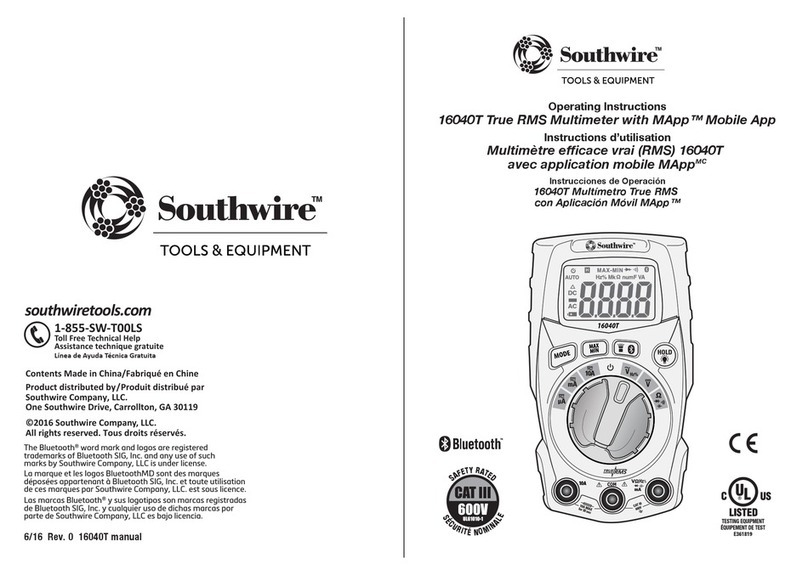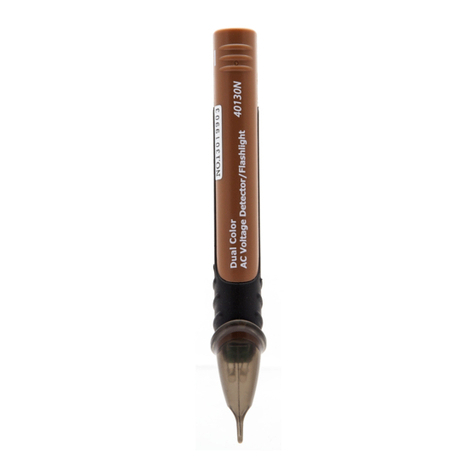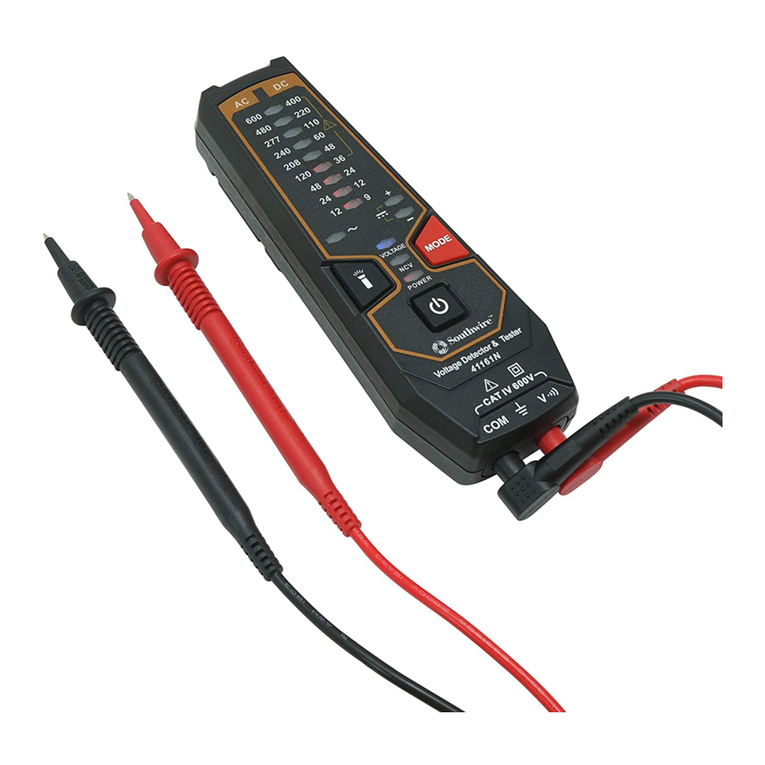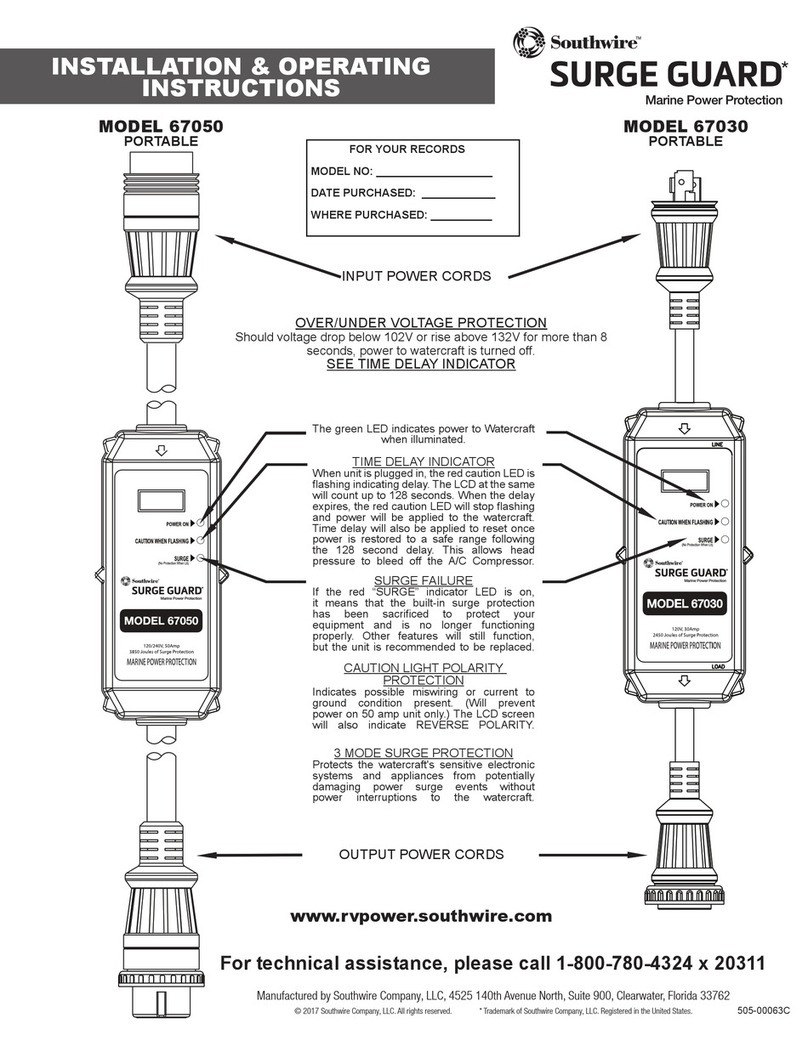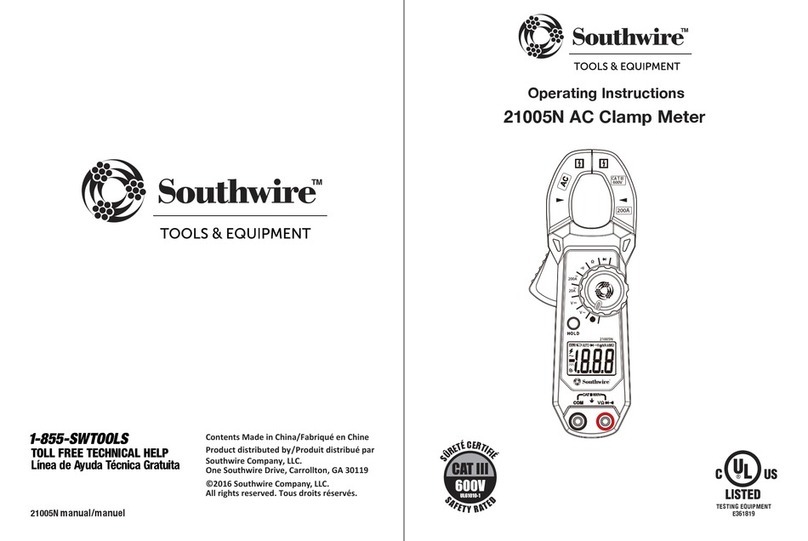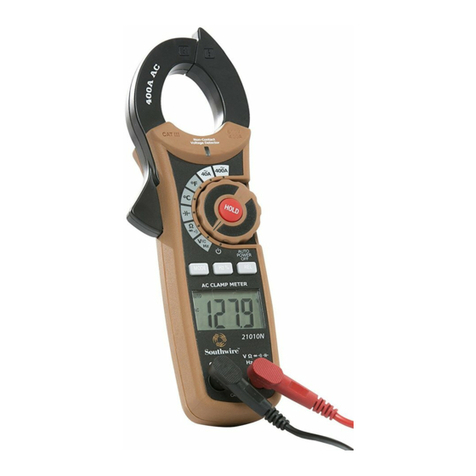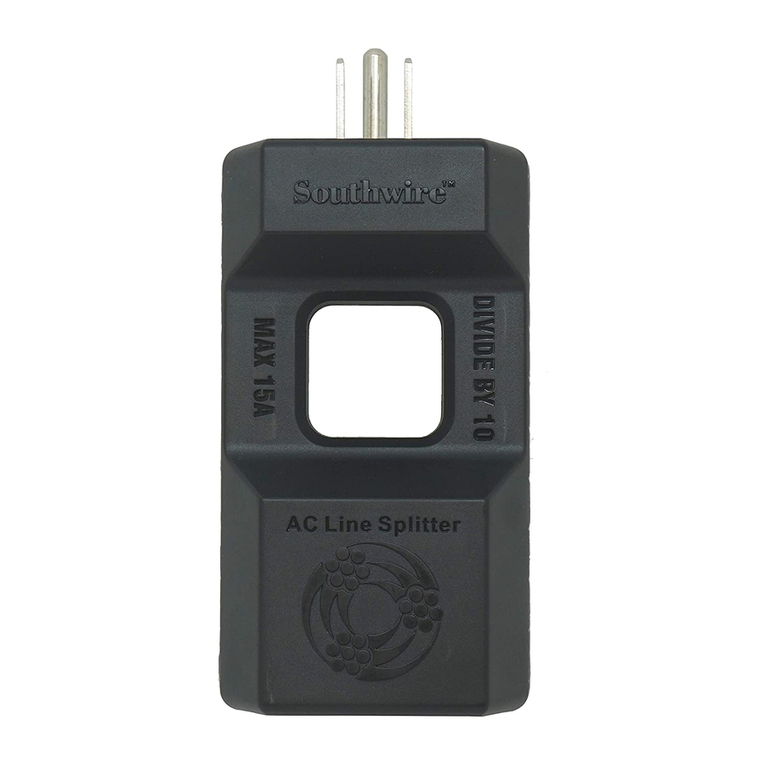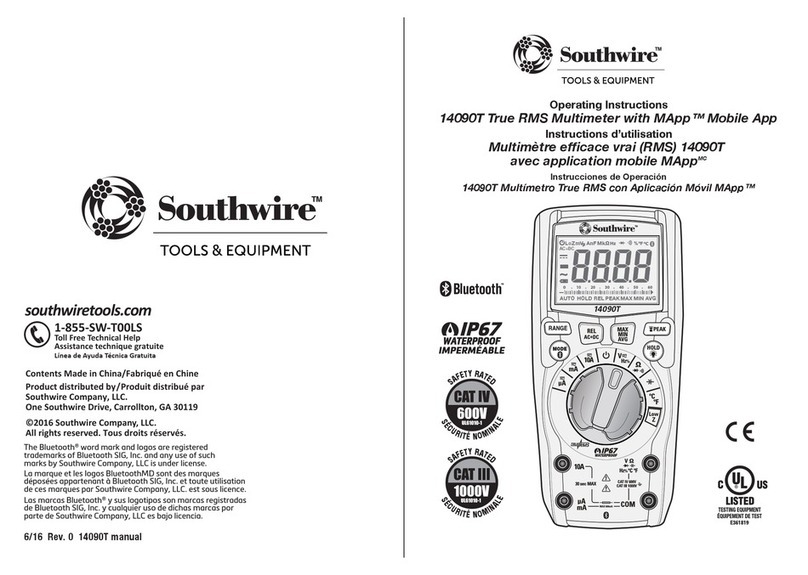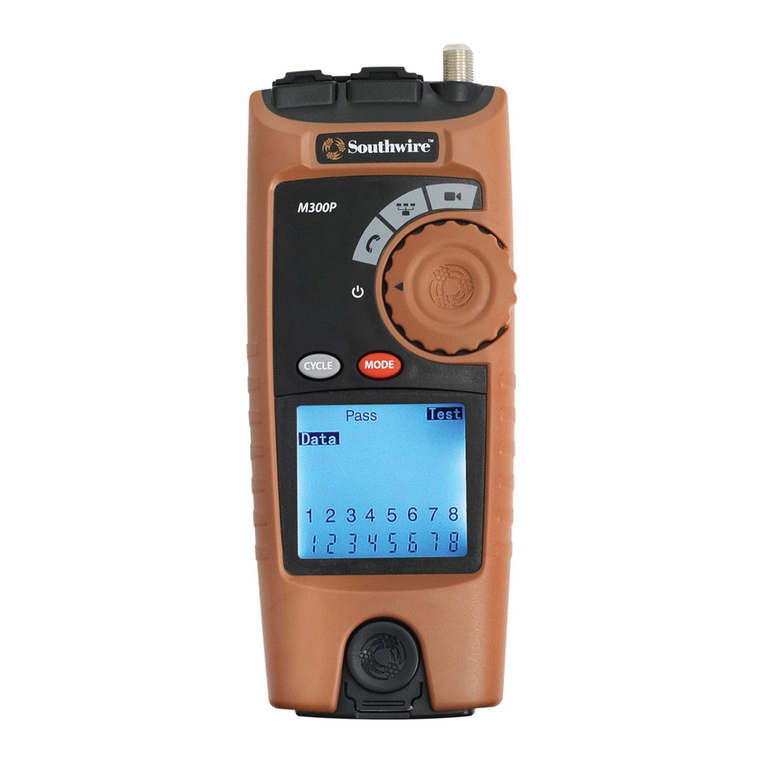7
Cambio de la Batería
Especificaciones
LED de rango de voltaje
Tolerancias
Tiempo de respuesta
Rango de frecuencia ACV
Tiempo de operación
Tiempo de recuperación
6, 12, 24, 36, 48, 110, 220, 400V DC
24, 48, 120, 208, 240, 277, 480, 600V AC
-30% a 0% de la lectura
< 0.1s LED
50/60Hz
30 segundos máx.
10 minutos después de alcanzar el tiempo de operación máximo
100 a 480V AC
50/60Hz
<300kΩ
5µA
600VAC/DC
100 a 400V AC
50/60Hz
2x1.5V Baterías “AAA”
14°F a 131°F (-10°C hasta 55°C)
max. 80% humedad relativa
CATIII - 600V
Rango de voltaje
Rango de frecuencia ACV
Prueba de voltaje unipolar
Rango de Resistencia
Prueba de corriente
Protección de sobre voltaje
Prueba de Continuidad
Fuente de energía
Rango de temperatura
Humedad
Clase de sobre voltaje
Información General
LEDs de rango de voltaje
Rango de frecuencia
Indicación de campo giratorio
1. Retire el tornillo Phillips ubicado en la parte inferior del comprobador.
2. Retire la tapa de la batería.
3. Cambie las dos baterías AAA de 1.5V.
4. Mantenga la polaridad correcta.
5. Instale la tapa de la batería y apriete el tornillo.
6. Presione el botón de “AUTO TEST” para confirmar la operación.
Para evitar la electrocución, desconecte las sondas
de cualquier fuente de voltaje antes de retirar la cubierta de la batería.
ADVERTENCIA:
Para evitar la electrocución, no utilice su
comprobador hasta que la cubierta de la batería esté bien asegurada.
ADVERTENCIA:
8
REGISTRE SU PRODUCTO
Registre su producto en www.southwiretools.com o al escanear el código QR en
este manual. En Southwire, estamos dedicados a proveer la mejor experiencia al
cliente. Al seguir unos pasos rápidos para registrar su producto, usted puede recibir
un servicio más rápido, ayuda más efectiva, e información acerca de futuros
productos. Simplemente proporcione el número de modelo y serie de su producto,
y alguna información personal – es así de fácil y rápido.
GARANTÍA LIMITADA Y LIMITACIÓN DE RESPONSABILIDAD EN MEDIDORES Y
PROBADORES DE SOUTHWIRE
Southwire Company, LLC garantiza este producto contra defectos en materiales y
mano de obra por dos años desde de la fecha de compra. Esta garantía no cubre
fusibles, baterías desechables, ni daños como resultado de un accidente, negligencia,
mala aplicación, contaminación, modificación, mantenimiento o reparación indebida,
uso fuera de las especificaciones, o manipulación anormal del producto. La única
responsabilidad de Southwire, y el único remedio del comprador, por cualquier
incumplimiento de esta garantía está limitada expresamente a la reparación o
reemplazo del producto por parte de Southwire. La reparación o reemplazo del
producto se hará bajo la determinación de Southwire y a su discreción.
SOUTHWIRE NO GARANTIZA QUE ESTE PRODUCTO SERÁ COMERCIABLE O ADECUADO PARA ALGÚN
PROPÓSITO EN PARTICULAR. SOUTHWIRE NO HACE NINGUNA OTRA GARANTÍA, EXPRESA O IMPLÍCITA,
SALVO QUE LA GARANTÍA ESPECÍFICAMENTE MENCIONADA EN ESTE PÁRRAFO. SOUTHWIRE NO SERÁ
RESPONSABLE DE DAÑOS INCIDENTALES, CONSECUENCIALES, INDIRECTOS, ESPECIALES, O PUNITIVOS
POR CUALQUIER INCUMPLIMIENTO DE ESTA GARANTÍA. Esta garantía no será válida si el
producto se utiliza para propósitos de alquiler. Ningún vendedor de productos está
autorizado para extender la garantía a nombre de Southwire en relación a este
producto, y la garantía de ningún vendedor será vinculante para Southwire. Si necesita
reclamar una garantía, o si el producto necesita servicio durante o después del periodo
de garantía mencionado en este documento, por favor contacte a Servicio al Cliente al
855-SWTOOLS (855-798-6657) o visite www.southwiretools.com para obtener una
autorización para devolver (RA) el producto, en la página web, haga clic en “Service
Department” para pedir un número de RA).
Usted debe obtener un número RA de Southwire antes que Southwire pueda procesar
la reclamación de garantía o pueda hacer cualquier servicio. La persona que haga la
devolución será responsable de los costos de envío y seguro asociados con enviar un
producto a Southwire. Southwire no se responsabiliza por productos dañados o
perdidos durante la devolución relacionada a esta garantía.
Todos los productos que se devuelvan a Southwire bajo esta garantía se deben
enviar a:
Southwire Company, LLC
Attention: Tool Warranty Return
840 Old Bremen Road
Carrollton, GA 30117
